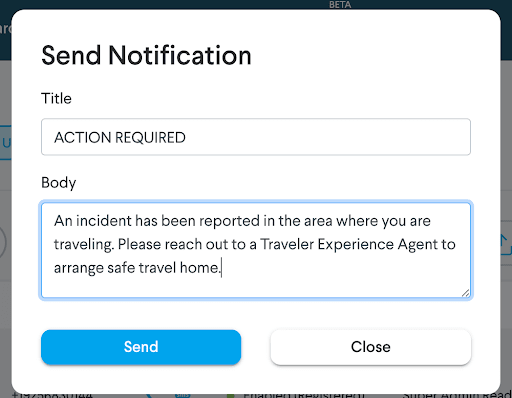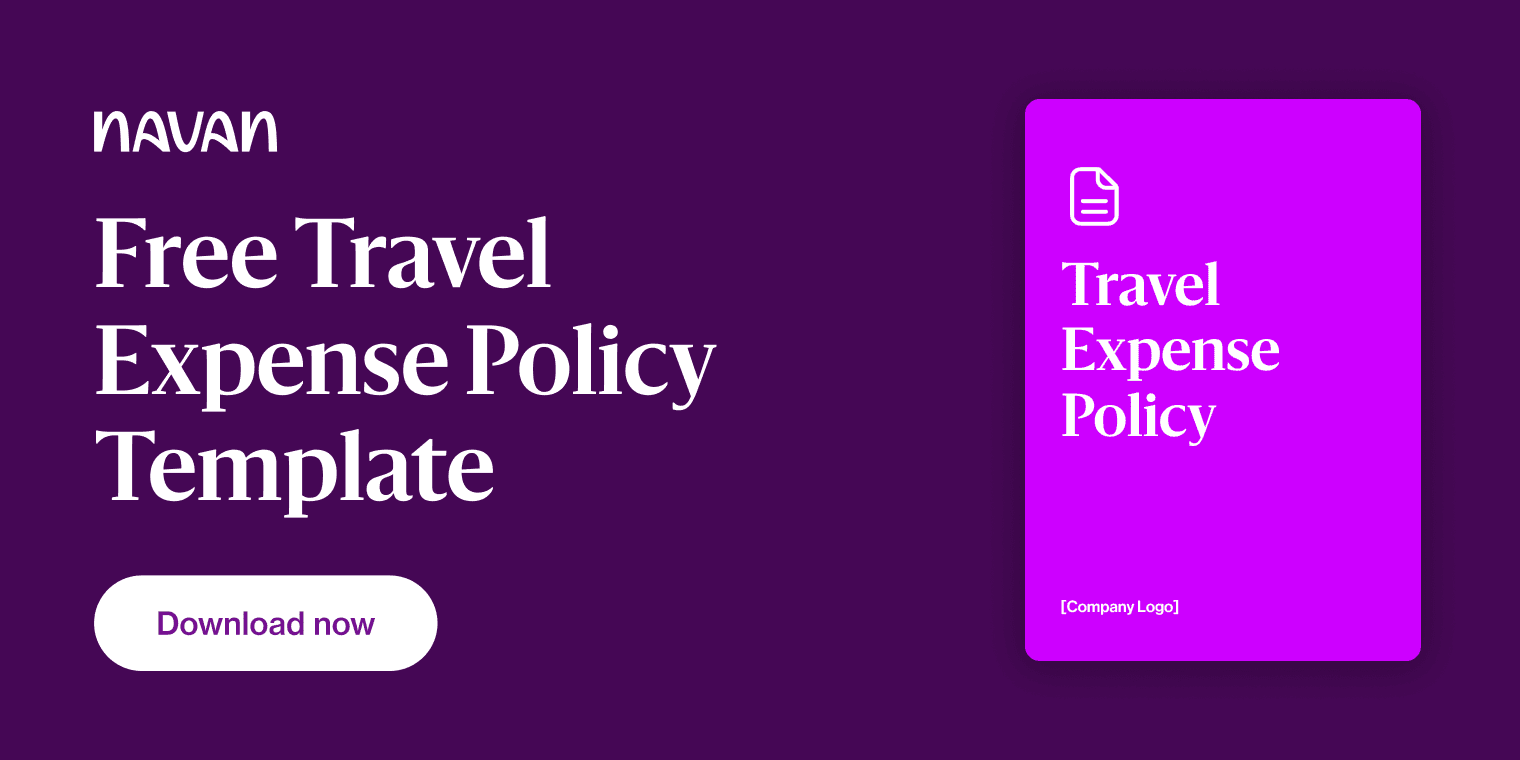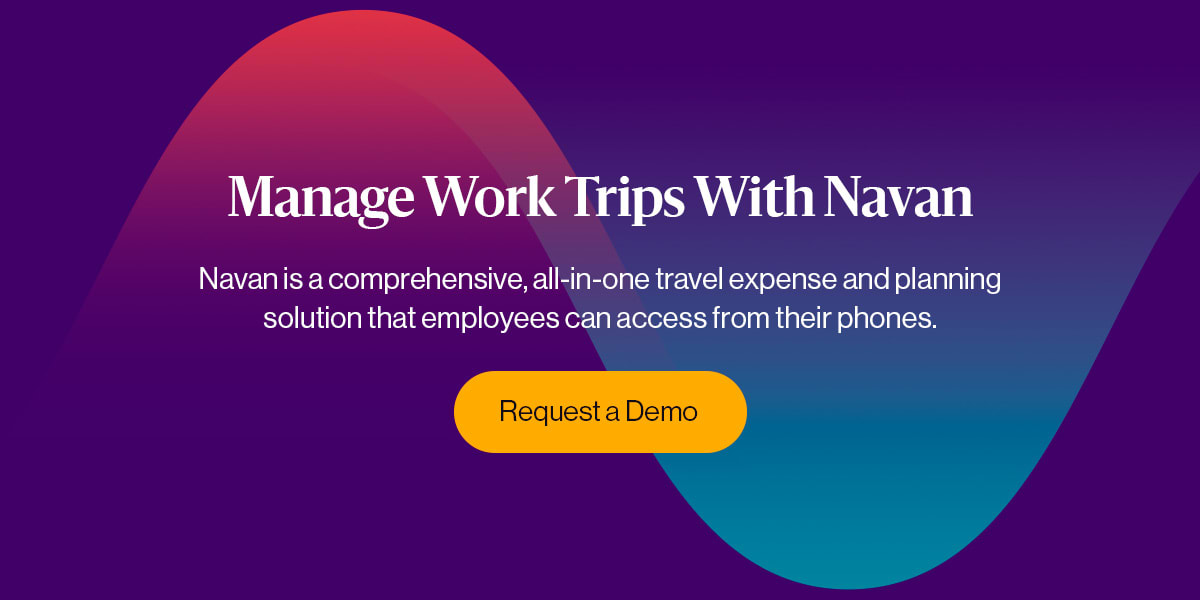Ensuring Comprehensive Business Travel Security
The Navan Team

Business travel has become a routine part of modern corporate life. From attending conferences to sealing critical deals with international partners, employees are constantly on the move. Yet these trips aren’t all about convenience and new opportunities — there’s also the responsibility to safeguard traveling staff.
This guide dives deep into business travel security, covering everything from understanding potential threats to implementing thorough safety strategies. Whether you’re a corporate travel manager seeking new ways to protect your employees or a business professional interested in staying safe on the road, you’ll find up-to-date insights, practical advice, and strategies for keeping travel routines both secure and efficient.
Understanding Business Travel Security
Business travel security refers to the policies, protocols, and precautions that organizations put in place to protect employees’ well-being and data while they’re on work-related trips.
In a global economy, it’s increasingly common for staff to visit unfamiliar locations — often under tight deadlines or high-pressure circumstances — which raises potential vulnerabilities. Yet it’s not just about personal safety at airports or hotel lobbies. While the focus is often on physical dangers, the significance of cybersecurity during travel is sometimes underestimated.
Corporate travelers frequently carry laptops, smartphones, and other devices containing sensitive information. Hackers or opportunistic criminals can exploit unsecured Wi-Fi networks in airports, hotels, or cafés to steal data, compromise passwords, or embed malware.
A solid security strategy addresses the full spectrum of possible hazards:
- Physical safety: Managing on-the-ground risks such as theft, political unrest, or health emergencies.
- Digital security: Safeguarding devices, networks, and sensitive company information from cyber threats.
By combining these approaches, companies better fulfill their duty of care, maintain operational efficiency, and show employees that their well-being matters.
What is duty of care?
Duty of care is an organization’s moral and legal obligation to ensure the safety of traveling employees while on business trips.
Key Techniques for Enhancing Travel Safety
Implementing a robust travel safety system isn’t just about ticking boxes. It’s about having a set of protocols that adapt to each destination’s unique conditions and potential risks.
Below are a few actionable techniques:
- Risk research: Gather detailed intelligence on upcoming destinations, focusing on local crime rates, cultural norms, and prevalent cyber threats.
- Health considerations: Check medical advisories, required vaccinations, and local healthcare facilities.
- Travel advisories: Government and international advisories provide valuable guidance on areas to avoid or precautions to take.
- Cultural sensitivity: Employees should be aware of local cultural norms and taboos to avoid confrontations or misunderstandings.
- Security basics: Offer training on securing belongings, spotting potential surveillance, and using digital devices safely.
- Emergency protocols: Employees benefit from knowing what to do if they experience theft, get injured, or lose their travel documents.
- Active tracking: Companies can keep track of travelers using secure platforms that monitor flight status, hotel check-ins, and more.
- Emergency alerts: Set up real-time notifications to warn employees of sudden changes in political climate, natural disasters, or security threats.
- Two-way communication: Provide employees with direct lines to company security or travel managers to allow for quick updates if something goes wrong.

Above: Navan makes it easy for companies to communicate quickly with traveling employees.
Continuous risk assessment during trips is crucial, as conditions can change rapidly. Ongoing evaluations help travelers adjust their strategies as needed. In the event of sudden protests or severe weather, they should be prepared to modify their schedules, routes, and communication plans.
- Security reports: Encouraging employees to document any incidents helps refine future protocols.
- Feedback loop: Learning from near-misses or unexpected issues can shape future training and policy revisions.
By making safety measures a continuous process — from planning through execution — companies can minimize unforeseen threats and keep employees confident in their company’s dedication to their well-being.
Benefits of a Robust Travel Security Program
Introducing a well-structured security program isn’t just about mitigating risks; it also yields tangible benefits for the company and its workforce:
Reduced Incidents
Fewer employees encounter threats or emergencies if precautions are in place. Proactive measures like regular training, updated advisories, and secure tech solutions can lower the likelihood of dangerous events.

Enhanced Employee Confidence
Employees prioritize safety in business travel. A Skift and Navan survey found that 55% of travelers consider it the most important factor when booking lodging.
Knowing their employer has taken steps to safeguard them can boost employees’ sense of security. This reassurance helps them stay focused on meeting objectives rather than constantly worrying about potential risks.
Duty-of-Care Compliance
Employers have a legal and moral obligation to safeguard their employees. A robust travel security program helps fulfill these obligations by consistently providing appropriate guidelines and resources.
Improved Duty of Care Management with Navan
Ancestry, a global leader in family history and consumer genomics, reports that Navan has expanded its duty of care capabilities, strengthening employee travel security.
“We didn’t have anything in terms of duty of care before Navan. Now built into Navan is the ability for us to see where people are on their trip. If there are any issues, we are able to reach out to them directly. Not only the travel team, but the security team has access as well.”
— Randy Luck, Sr. Manager of Accounts Payable & Travel, Ancestry.
Read the full case study to see how Navan transformed travel and expense management for Ancestry.
Long-Term Employee Loyalty
Corporate travel security can have a positive affect on employee morale and retention. When employees feel valued — especially regarding health and safety — they’re more likely to stay with the company. Implementing comprehensive safeguards helps foster a culture of care and respect.
By going beyond bare minimum security practices, organizations protect their teams and build trust and loyalty in the workforce.

Implementing Security Measures in Your Organization
Launching an effective travel security program requires a systematic approach involving multiple departments, resources, and consistent oversight:
- Identify vulnerabilities: Take stock of current travel policies, highlight potential weak spots, and anticipate regional risks specific to common travel destinations.
- Consult experts: Partnering with travel security specialists can bring clarity and practical insights to your organization’s security planning.
- Create comprehensive guidelines: Outline steps for pre-trip approvals, traveler risk assessments, and local contact procedures.
- Include employee input: Involving employees in policy development is essential. Their participation improves adherence and helps create practical, effective guidelines.
- Define clear accountability: Assign responsibilities to travel managers, security leads, and employees for consistent follow-through.
- Frequent training sessions: Conduct workshops focusing on both physical and digital safety measures.
- Ongoing communication: Keep everyone updated on changes in security policies or new travel advisories.
- Scenario-based practice: Role-playing potential scenarios — like getting lost in an unfamiliar city or dealing with suspicious communications — helps employees learn how to respond calmly and effectively.
- Roll out security tools: Use secure booking platforms, encrypted communication methods, and risk-monitoring technologies.
- Real-time data analysis: Continuously assess travel data for patterns or red flags. Identify recurring issues to improve future guidelines.
- Regular check-ins: Set consistent intervals to verify that protocols are being followed and remain relevant as travel conditions change.
- Gather feedback: Seek input from employees who’ve recently traveled and review incident logs to refine policies.
- Policy updates: Keep security measures current by revisiting guidelines at least annually or whenever major geopolitical or industry changes arise.
- Celebrate successes: Acknowledge and reward teams and employees who follow best practices, reinforcing the importance of shared accountability.
Exploring the Role of Technology in Travel Security
Technology is reshaping how organizations approach business travel security. From artificial intelligence to mobile apps, innovative solutions offer peace of mind for companies wanting to stay ahead of ever-evolving threats.
AI-Driven Risk Assessment Tools
By analyzing massive data sets — such as real-time location information, historical incident reports, and emerging patterns — AI can flag potential threats more quickly and accurately than traditional methods. This early warning system gives employees the chance to modify travel plans or take extra precautions before issues escalate.
Mobile Safety Apps
These apps provide on-the-go alerts and reminders about everything from delayed flights to regional security hazards. Real-time push notifications can warn travelers of sudden local disturbances or severe weather events.
Secure Communication Platforms
Encryption adds a critical layer of security for employees who need to send sensitive emails, messages, or documents while on the road. These platforms reduce the risk of data leaks or unauthorized access.
GPS Tracking and Check-In Features
Employers can monitor employees’ locations to protect their safety and provide the ability to send an SOS message in case of an emergency. Embracing modern tech solutions is essential for building a dynamic, future-proof travel security framework.

Above: Live traveler locations on Navan’s map
By pairing these tools with robust policies and well-trained staff, organizations can significantly diminish risks and confidently dispatch employees around the globe.
FAQ
Meet Navan
As business travel expands across borders and industries, managing logistics alongside security can feel overwhelming. Navan’s business travel solution aims to lighten the load by offering integrated travel management solutions that combine convenience with effective security measures.
Our platform helps companies:
- Streamline bookings and itineraries: Through a secure booking platform that centralizes flight, hotel, and transportation reservations.
- Receive real-time risk alerts: Stay informed about emerging threats, from sudden weather incidents to regional travel advisories.
- Protect sensitive data: Features robust encryption and data privacy tools designed to thwart cyber threats.
- Access 24/7 support: Round-the-clock assistance means help is always just a call or message away if something unexpected happens.
- Traveler tracking tools: GPS-based tracking is available through the app to allow for effective and quick response in case of an emergency.
By focusing on holistic safety measures, Navan goes beyond simple itinerary management. We help you proactively identify and mitigate threats — both on the ground and in cyberspace — so your employees can focus on meeting their business goals.
Summary
In today’s interconnected world, business travel security isn’t optional — it’s a core part of responsible corporate operations. Employers must consider physical and digital vulnerabilities, especially as our reliance on smartphones, laptops, and online resources increases.
A truly holistic approach involves comprehensive pre-trip planning, traveler training, ongoing risk assessments, and carefully thought-out policies that are regularly updated to keep pace with evolving threats.
By merging physical safety protocols with strong cybersecurity measures, companies can shield employees from harm, protect sensitive data, and build a foundation of trust and loyalty. Now is the time to be proactive — engage security experts, develop thorough guidelines, and involve your traveling employees in the process. With the right mix of precaution, technology, and continuous improvement, your organization can confidently safeguard its corporate journeys.
Ready to stay ahead with your company’s corporate travel security? Book a demo to discover Navan’s travel and expense management solution.
This content is for informational purposes only. It doesn't necessarily reflect the views of Navan and should not be construed as legal, tax, benefits, financial, accounting, or other advice. If you need specific advice for your business, please consult with an expert, as rules and regulations change regularly.

